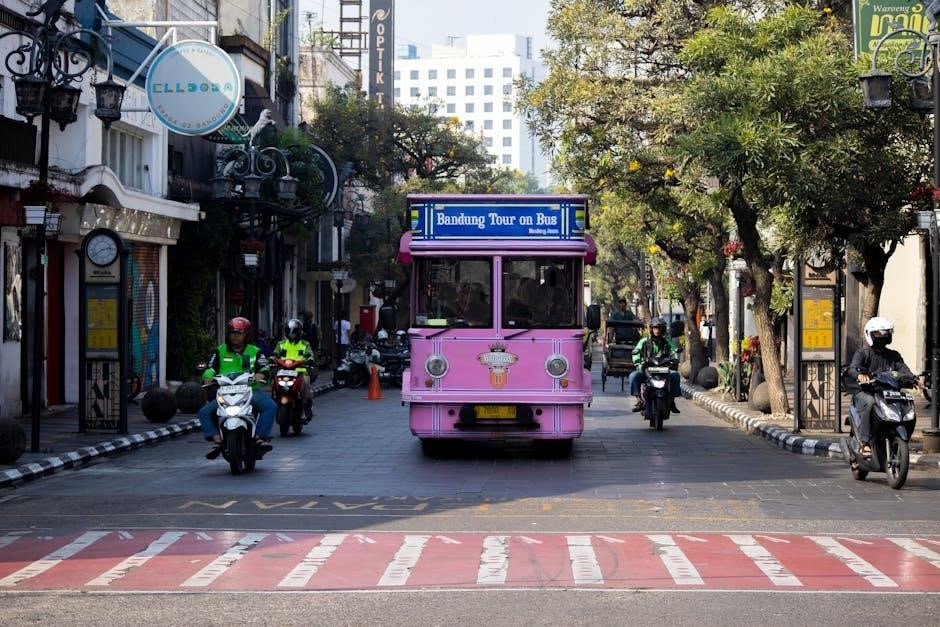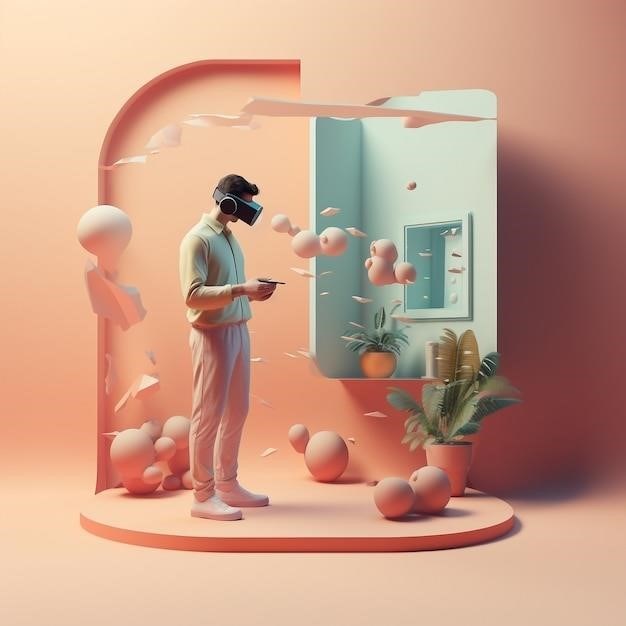Decluttering and minimalism have become popular lifestyle choices, helping individuals simplify their lives. A Guide to Getting Rid of Almost Everything offers practical strategies for decluttering, from Marie Kondo’s Joy KonMari method to Swedish Death Cleaning. These approaches emphasize mindful consumption, emotional detachment, and sustainable disposal of items; The guide also explores challenges like hoarding and digital clutter, providing solutions for a clutter-free life. It’s a comprehensive resource for those seeking to declutter and embrace minimalism.
Understanding the Concept of Getting Rid of Almost Everything
Getting rid of almost everything involves decluttering your life by removing non-essential items. This concept, popularized by guides like Marie Kondo’s The Life-Changing Magic of Tidying Up and Margareta Magnusson’s The Gentle Art of Swedish Death Cleaning, focuses on keeping only what sparks joy or serves a purpose. It encourages a mindset shift from accumulation to simplicity, helping individuals break free from consumerism. The process involves thanking items for their service before letting them go, fostering gratitude and emotional detachment. This approach not only declutters physical spaces but also mental and emotional burdens, promoting a more intentional lifestyle.
The Benefits of Decluttering for a Simpler Life
Decluttering offers numerous benefits, including reduced stress and anxiety, as a tidy environment promotes mental clarity. It saves time by minimizing the effort spent searching for misplaced items. Decluttering also fosters financial savings by encouraging reuse and recycling of items. Additionally, it promotes sustainability by reducing waste and encouraging mindful consumption. By letting go of unnecessary possessions, individuals can focus on what truly matters, leading to a more organized and fulfilling life. The process also helps cultivate gratitude and contentment, making it easier to appreciate what you already have.

Practical Strategies for Decluttering
Effective decluttering involves methods like the KonMari Method, Swedish Death Cleaning, and the 100 Thing Challenge. These strategies help organize, simplify, and sustain a clutter-free lifestyle efficiently.
The KonMari Method: Sparking Joy in Your Belongings
The KonMari Method, popularized by Marie Kondo, focuses on surrounding yourself with items that bring joy. Start by gathering items of one category, like clothes, and hold each to see if it sparks joy. If it does, keep it; if not, thank the item and discard it. Fold clothes into small rectangles for storage, and organize items vertically in drawers. This method emphasizes gratitude and mindfulness, helping create a more organized, joyful living space by keeping only what truly matters.
Swedish Death Cleaning: A Practical Approach to Decluttering
Swedish Death Cleaning, or “döstädning,” is a practical decluttering approach from Margareta Magnusson. It involves gradually decluttering to leave a lighter legacy for loved ones. Start with small tasks, like sorting papers or clearing out closets. Focus on items that bring joy or serve a purpose, and let go of the rest. This method emphasizes organization and mindfulness, providing a thoughtful way to simplify your space and ensure a smooth transition for others. It’s a gentle, unsentimental guide to decluttering with purpose and care.
Emotional and Psychological Aspects of Decluttering
Decluttering often involves emotional challenges, such as attachment to sentimental items or fear of loss. It requires psychological strength to let go, sparking personal growth and clarity.
Letting Go of Sentimental Items: A Guide to Emotional Detachment
Letting go of sentimental items can be emotionally challenging, as they often hold memories or emotional value. However, keeping everything can lead to clutter and stagnation. Marie Kondo’s KonMari method suggests thanking items for their service before letting them go, creating a sense of closure. Swedish Death Cleaning encourages considering what others might want, easing the emotional burden. Taking photos of items or creating memory boxes can help preserve memories without the physical clutter. Emotional detachment is a process, but it fosters clarity and allows space for new experiences and growth.
The Psychology Behind Hoarding and How to Overcome It
Hoarding is often rooted in emotional attachment, fear of loss, or perfectionism, making it difficult to part with items. Research suggests that hoarding behaviors stem from cognitive distortions, such as overvaluing possessions or believing items will be needed someday. Overcoming hoarding requires a combination of therapy, organizational strategies, and gradual decluttering. Techniques like the “one in, one out” rule and categorizing items can help manage clutter. Professional support, such as cognitive-behavioral therapy (CBT), is often essential for addressing underlying issues. Small, consistent steps can lead to significant progress in breaking the cycle of hoarding.

Where to Start: A Step-by-Step Guide
Begin with small, manageable steps: declutter one area or category at a time. Assess each item’s value, deciding to keep, donate, sell, or discard. Set clear goals and priorities to guide your process.
Creating a Decluttering Plan: Setting Goals and Priorities
Start by defining clear goals, such as creating more space or reducing stress. Assess priority areas needing attention, like closets or desks. Categorize items into groups (e.g., clothes, papers) and tackle one category at a time. Use a timeline to stay focused, setting deadlines for each task. Consider the 80/20 rule: 80% of the time, you likely use 20% of your items. This helps prioritize what to keep and what to let go of. Finally, create a “maybe” box for undecided items to review later, ensuring intentional decisions.
Organizing Your Space: Tips for Sorting and Categorizing Items
Begin by gathering supplies like boxes or bins for sorting. Use a four-box method: Keep, Donate/Sell, Recycle, and Discard. Start with one area, sorting items into categories (e.g., clothes, books). Handle similar items together to avoid confusion. Label each box clearly and consider the 80/20 rule: 80% of the time, you likely use 20% of your items. Store frequently used items in accessible locations and less-used items out of the way. This systematic approach ensures a clutter-free and organized space, making it easier to maintain over time.

What to Do with Unwanted Items
Donate, sell, or recycle unwanted items responsibly. Consider creative repurposing or upcycling. Ensure ethical disposal to minimize environmental impact and support sustainable practices.
Donating, Selling, and Recycling: Responsible Disposal of Items
Responsible disposal of unwanted items is a key aspect of decluttering. Donating to charities or local organizations helps others while reducing waste. Selling items through online platforms, garage sales, or consignment shops can generate income. Recycling ensures materials are repurposed sustainably. Creative repurposing or upcycling transforms items into something new, reducing landfill contributions. Eco-friendly disposal methods, like proper hazardous waste handling, protect the environment. These approaches align with minimalism’s focus on sustainability and mindful consumption, making decluttering both impactful and ethical.
Creative Ways to Repurpose or Upcycle Unwanted Items
Transforming unwanted items into something new breathes life into discarded materials. Old jars can become storage containers or DIY terrariums, while fabric scraps can be sewn into reusable bags or quilts. Broken furniture pieces can be repurposed as planters or shelves. Upcycling not only reduces waste but also fosters creativity. Consider turning old clothes into cleaning rags or creating unique gifts from leftover materials. Online platforms offer inspiration for innovative upcycling projects. By thinking outside the box, you can give items a fresh purpose, aligning with sustainable living and minimalism principles. This approach makes decluttering both fun and environmentally friendly.

Digital Decluttering
Digital clutter includes emails, files, and social media. Organizing your digital life streamlines productivity and reduces stress. Use KonMari’s spark joy principle for a cleaner online presence.
Managing Digital Clutter: Cleaning Up Your Online Presence
Digital clutter can overwhelm your online life, affecting productivity and mental calm. Start by organizing your email, deleting unnecessary messages, and unsubscribing from unwanted newsletters. Use cloud storage effectively, ensuring files are categorized and easily accessible. Regularly review social media accounts, removing outdated posts and connections. Implementing these strategies helps create a streamlined digital environment, reducing stress and improving efficiency. Remember, maintaining a clutter-free online presence is an ongoing process that enhances overall well-being and focus in a hyper-connected world.
Organizing Digital Files: Tips for a Streamlined Digital Life
Organizing digital files is essential for efficiency and peace of mind. Start by creating a clear folder structure, using descriptive names for files and folders. Regularly back up your data to avoid losses. Use cloud storage services like Google Drive or Dropbox for easy access and sharing. Schedule periodic cleanups to delete unnecessary files and duplicates. Utilize search tools and tags to quickly locate documents. Consider implementing a “one touch rule” when saving files to avoid clutter. These practices help maintain a streamlined digital environment, saving time and reducing stress in your daily life.

Handling Specific Types of Items
Decluttering specific items requires tailored strategies. For clothing, adopt a minimalist wardrobe approach, while paper clutter can be managed through digitization and organized filing systems effectively.
Decluttering Clothing: Tips for a Minimalist Wardrobe
Decluttering clothing involves mindful curation. Start by identifying items that spark joy or serve a purpose, using Marie Kondo’s KonMari method. Consider the Swedish Death Cleaning approach for sentimental pieces. Create a capsule wardrobe by selecting high-quality, versatile items. Use a color-coded system to simplify choices. Store out-of-season clothes neatly. Adopt the “one in, one out” rule to prevent clutter buildup. Donate, sell, or repurpose unwanted items sustainably. Reflect on the 80/20 rule—80% of the time, you likely wear 20% of your clothes. Streamline your wardrobe for comfort, practicality, and style.
Managing Paper Clutter: Digitizing and Organizing Documents
Managing paper clutter requires a strategic approach. Start by sorting documents into categories like bills, receipts, and personal records. Digitize important papers using scanners or apps, then store them securely in cloud storage. Shred or recycle unnecessary documents to reduce physical bulk. Implement a filing system for papers you need to keep, using labeled folders. Regularly review and update your digital and physical files to ensure accuracy. Consider switching to digital subscriptions and bills to minimize future clutter. This organized approach saves space, reduces stress, and makes information easily accessible while maintaining security and sustainability.
The Role of Minimalism in Modern Life
Minimalism simplifies life by reducing excess, fostering clarity and focus. It encourages intentional living, prioritizing what truly matters, and breaking free from consumerism, enhancing overall well-being and satisfaction.
Understanding Minimalism: More Than Just a Trend
Minimalism is a lifestyle choice that goes beyond a fleeting trend, emphasizing simplicity, intentionality, and clarity. It encourages individuals to focus on what truly adds value, whether through relationships, experiences, or essential possessions. By paring down belongings, minimalism fosters a mindset of gratitude and mindfulness, helping people break free from consumerism. This philosophy is not about deprivation but about living deliberately. As highlighted in guides like A Guide to Getting Rid of Almost Everything, minimalism offers practical strategies for decluttering and organizing, promoting a more sustainable and fulfilling way of life that aligns with personal values and goals.
The 100 Thing Challenge: Living with Only Essential Items
The 100 Thing Challenge encourages individuals to drastically reduce their possessions to only 100 essential items. This radical approach aims to break free from consumerism and focus on what truly matters. Dave Bruno’s challenge, as featured in A Guide to Getting Rid of Almost Everything, shows how simplifying possessions can lead to a more meaningful life. By carefully selecting items that bring value or joy, participants learn to embrace minimalism and redefine their relationship with material goods, fostering a simpler, more intentional lifestyle that prioritizes experiences over accumulation.

Sustainability and Eco-Friendly Practices
Adopting eco-friendly practices involves mindful disposal of unwanted items through donating, recycling, or upcycling. This approach reduces waste and supports a zero-waste lifestyle, promoting environmental sustainability and responsibility.
Eco-Friendly Ways to Dispose of Unwanted Items
Eco-friendly disposal methods include donating items to charities or thrift stores, recycling materials like paper and electronics, and upcycling to create new uses; These practices reduce landfill waste and promote sustainability. Proper disposal of hazardous materials, such as batteries and chemicals, is also crucial. Additionally, participating in community collection events ensures responsible disposal. By choosing these methods, individuals contribute to environmental conservation and support a circular economy. It’s a mindful approach to decluttering that benefits both the community and the planet.
Reducing Waste: A Guide to Zero-Waste Living
Zero-waste living involves minimizing waste by adopting sustainable practices. Start by avoiding single-use items and opting for reusable alternatives like cloth bags and water bottles. Composting organic waste reduces landfill contributions and creates nutrient-rich soil. Buying in bulk and choosing products with minimal packaging also helps. Repurposing items before discarding them extends their lifecycle. Educating yourself on local recycling programs ensures proper disposal of materials. Small, consistent changes can significantly reduce waste, promoting a healthier environment and fostering a culture of sustainability. It’s a mindful approach to consumption and waste management.

Tools and Resources for Decluttering
Essential tools include decluttering apps like Tidying Up, checklists, and organizing software. Resources offer practical tips, step-by-step guides, and inspiration for maintaining a clutter-free lifestyle effectively.
Apps and Tools to Help You Declutter and Organize
Various apps and tools simplify decluttering and organizing. Apps like Tidying Up and Decluttr help categorize items, while Letgo and Sortly assist in selling or donating. Digital tools enable tracking and organizing tasks, ensuring a streamlined process. Checklists and worksheets from guides like A Guide to Getting Rid of Almost Everything provide structured approaches. These resources aid in maintaining a minimalist lifestyle, offering practical solutions for managing both physical and digital clutter effectively. They empower users to stay organized and focused on their decluttering goals, fostering long-term habits for a clutter-free life.
Checklists and Worksheets for Effective Decluttering
Checklists and worksheets are essential tools for systematic decluttering. They help break down tasks, track progress, and maintain focus. The guide provides templates for categorizing items, setting deadlines, and documenting decisions. Worksheets like the “100 Thing Challenge” list and emotional detachment exercises aid in decision-making. These tools ensure a structured approach, making decluttering less overwhelming. They also help maintain accountability and motivation, ensuring long-term success in achieving a minimalist lifestyle. By using these resources, individuals can efficiently organize their space and mindset, fostering a clutter-free environment.

Maintaining Your Space After Decluttering
Maintaining a clutter-free space requires consistent habits and regular upkeep. Implement daily routines, like tidying up for 10 minutes, and schedule weekly decluttering sessions. Stay mindful of new purchases and ensure everything has a designated place. By creating these habits, you’ll preserve the simplicity and organization achieved through decluttering, fostering a sustainable and peaceful living environment.
Creating Habits for Long-Term Organization
Establishing consistent habits is key to maintaining a clutter-free space. Start with small, manageable routines, such as dedicating 10 minutes daily to tidy up or implementing the “One In, One Out” rule to prevent accumulation. Schedule weekly decluttering sessions to address new clutter and reinforce organization systems. Prioritize storage solutions that promote accessibility and visibility, discouraging items from being forgotten or misplaced. By integrating these practices into your daily life, you’ll cultivate a mindset that values simplicity and order, making long-term organization achievable and sustainable.
Regular Maintenance: Keeping Your Space Clutter-Free
Regular maintenance is essential for sustaining a clutter-free environment. Implement a daily routine of tidying up, such as putting items back in their designated places. Schedule weekly cleanups to address new clutter and ensure organizational systems remain effective. Monthly, review and adjust storage solutions to adapt to changing needs. Consistency is key; by making maintenance a habit, you prevent clutter from accumulating. This proactive approach fosters a sense of control and calm, ensuring your space remains organized and functional over time.

Case Studies and Success Stories
Real-life examples, like Marie Kondo’s clients and Dave Bruno’s 100 Thing Challenge, demonstrate how decluttering transforms lives. These stories inspire and motivate others to embrace minimalism and organization.
Real-Life Examples of Successful Decluttering
Marie Kondo’s clients often report transformative results, finding joy in tidying and creating serene living spaces. Dave Bruno’s 100 Thing Challenge inspired many to embrace minimalism, proving that fewer possessions lead to greater fulfillment. Swedish Death Cleaning stories highlight how downsizing brought families closer, easing the burden of inheritance. These real-life examples demonstrate how decluttering can reduce stress, improve focus, and foster a sense of control. They inspire others to take the first step toward a simpler, more intentional life, showing that decluttering is not just about removing items but about gaining clarity and purpose.
Lessons Learned from Minimalist Communities
Minimalist communities offer valuable insights into the power of shared simplicity. They emphasize collaboration, sustainability, and mindful consumption, showing how collective efforts can simplify living. These groups often adopt practices like shared resources and communal spaces, reducing individual ownership. They teach us that minimalism is not just about fewer possessions but about fostering connections and living intentionally. By prioritizing experiences over material goods, minimalist communities inspire individuals to reevaluate their priorities and embrace a lifestyle centered on what truly matters—relationships, personal growth, and harmonious living with others and the environment.
Embracing a clutter-free life transforms spaces and minds, fostering clarity and fulfillment. Minimalism offers lasting benefits, encouraging intentional living and a deeper appreciation for what truly matters.
The Long-Term Benefits of Decluttering
Decluttering offers profound long-term benefits, enhancing mental clarity and reducing stress. By simplifying your environment, you save time and money, focusing on what truly adds value. It fosters a sense of control and peace, promoting sustainable habits and a minimalist mindset. Over time, decluttering becomes a lifestyle, leading to greater productivity and a more organized, intentional way of living. The positive impact extends beyond physical spaces, influencing emotional well-being and overall life satisfaction.
Final Thoughts on Embracing a Clutter-Free Life
Embracing a clutter-free life is a transformative journey that goes beyond organizing spaces. It’s about creating a mindset that values simplicity, intentionality, and sustainability. By letting go of the unnecessary, you make room for what truly matters—relationships, experiences, and personal growth. Decluttering isn’t just about physical items; it’s about mental and emotional freedom. The long-term rewards include reduced stress, increased productivity, and a deeper sense of fulfillment. Ultimately, a clutter-free life invites clarity, peace, and the opportunity to live more authentically, aligning with your true priorities and aspirations.



